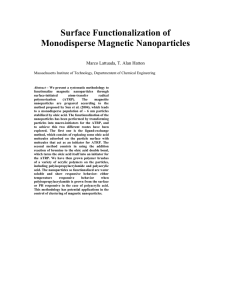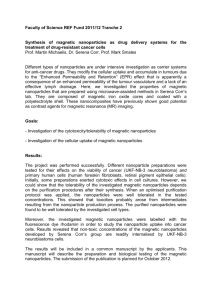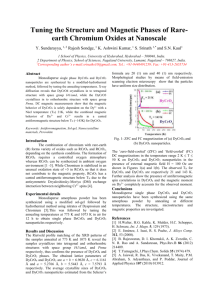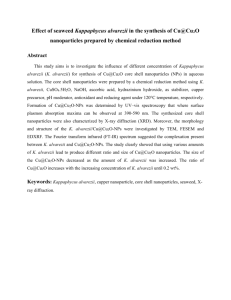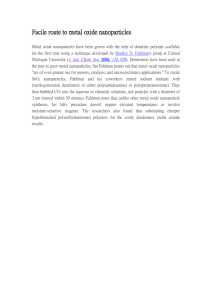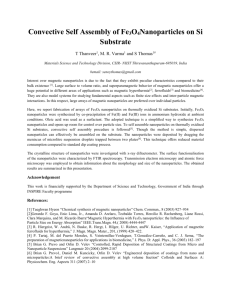DEVELOPMENT OF A DRUG DELIVERY SYSTEM BASED ON
advertisement
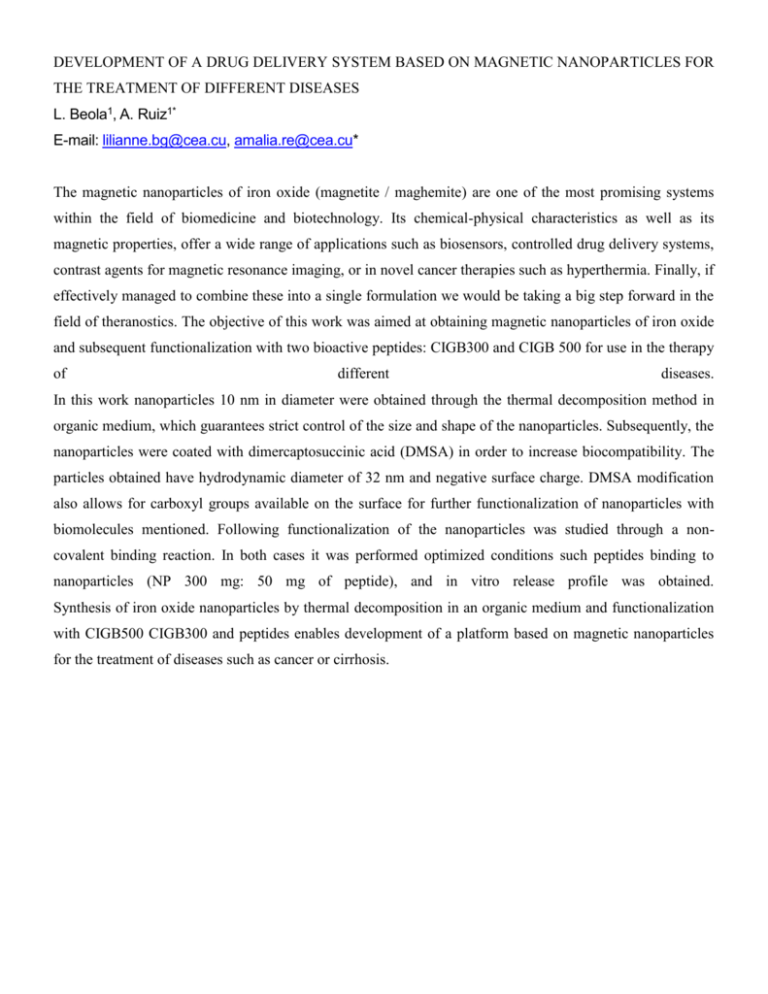
DEVELOPMENT OF A DRUG DELIVERY SYSTEM BASED ON MAGNETIC NANOPARTICLES FOR THE TREATMENT OF DIFFERENT DISEASES L. Beola1, A. Ruiz1* E-mail: lilianne.bg@cea.cu, amalia.re@cea.cu* The magnetic nanoparticles of iron oxide (magnetite / maghemite) are one of the most promising systems within the field of biomedicine and biotechnology. Its chemical-physical characteristics as well as its magnetic properties, offer a wide range of applications such as biosensors, controlled drug delivery systems, contrast agents for magnetic resonance imaging, or in novel cancer therapies such as hyperthermia. Finally, if effectively managed to combine these into a single formulation we would be taking a big step forward in the field of theranostics. The objective of this work was aimed at obtaining magnetic nanoparticles of iron oxide and subsequent functionalization with two bioactive peptides: CIGB300 and CIGB 500 for use in the therapy of different diseases. In this work nanoparticles 10 nm in diameter were obtained through the thermal decomposition method in organic medium, which guarantees strict control of the size and shape of the nanoparticles. Subsequently, the nanoparticles were coated with dimercaptosuccinic acid (DMSA) in order to increase biocompatibility. The particles obtained have hydrodynamic diameter of 32 nm and negative surface charge. DMSA modification also allows for carboxyl groups available on the surface for further functionalization of nanoparticles with biomolecules mentioned. Following functionalization of the nanoparticles was studied through a noncovalent binding reaction. In both cases it was performed optimized conditions such peptides binding to nanoparticles (NP 300 mg: 50 mg of peptide), and in vitro release profile was obtained. Synthesis of iron oxide nanoparticles by thermal decomposition in an organic medium and functionalization with CIGB500 CIGB300 and peptides enables development of a platform based on magnetic nanoparticles for the treatment of diseases such as cancer or cirrhosis.


